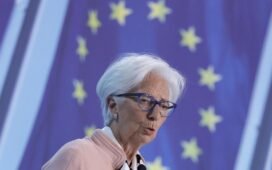- The Indian Rupee weakens in Tuesday’s early European session.
- A firmer USD, ongoing Foreign Institutional Investors (FIIs) outflows, and downbeat Indian economic data weigh on the INR.
- Fed’s Bostic and Daly are set to speak later on Tuesday.
The Indian Rupee (INR) softens on Tuesday, pressured by the stronger US Dollar (USD). Furthermore, persistent foreign capital outflows since late-2024 and downbeat India’s Gross Domestic Product (GDP) data undermine the INR. The country’s economy is estimated to grow at a slower pace in the coming years, as its run of 8% annual growth proved to be unsustainable.
On the other hand, US President Trump’s one-month pause on tariffs against Canada and Mexico could weigh on the Greenback and provide some support to the INR. Additionally, the intervention by the Reserve Bank of India (RBI) by selling the USD might help limit the INR’s losses.
Looking ahead, traders will monitor the development surrounding Trump tariff policies. China is due to be hit with across-the-board tariffs of 10% that begin at 05:00 GMT on Tuesday. Federal Reserve (Fed) Raphael Bostic and Mary Daly are scheduled to speak later on Tuesday.
Indian Rupee edges lower amid tariff jitters
- HSBC India Manufacturing PMI rose to 57.7 in January from 58.0 in December, weaker than the expectation of 57.8.
- “India’s final manufacturing PMI marked a six-month high in January. Domestic and export demand were both strong, supporting new order growth. The employment PMI suggested robust job creation in the manufacturing industry, as the index increased to its highest level since the series was created,” said Pranjul Bhandari, chief India economist at HSBC.
- Late Monday, Trump said that he will pause the 25% tariffs on goods entering the United States from Mexico and Canada for one month. While Mexico and Canada have had tariffs postponed for at least 30 days, China stands alone in facing the new Trump levies.
- The US Manufacturing PMI rose to 50.9 in January from 49.3 in December, according to the Institute for Supply Management (ISM) on Monday. This reading came in better than the estimation of 49.8.
- Boston Fed President Susan Collins said on Monday that it’s really appropriate for policy to be patient, careful, and there’s no urgency for making additional adjustments, especially given all of the uncertainty.
- Chicago Fed President Austan Goolsbee said that a very lack of clarity requires a go-slower approach on interest-rate cuts.
- Markets reduce expectations of rate cuts from the Fed in the wake of the tariff news, with futures pricing in just a 50% odds of two cuts this year, according to the CME FedWatch tool.
USD/INR maintains its positive view, but an overbought RSI warrants caution for bulls
The Indian Rupee remains weak on the day. The strong bullish outlook of the USD/INR pair remains in play as the price has broken above the trading range and is well-supported above the key 100-day Exponential Moving Average (EMA).
Nonetheless, the 14-day Relative Strength Index (RSI) moves beyond the 70.00 mark, warranting some caution for bulls. The overbought condition suggests that further consolidation cannot be ruled out before positioning for any near-term USD/INR appreciation.
The immediate resistance level for USD/INR emerges at the 87.00 psychological mark. Sustained gains above this level could see a run to 87.28, the all-time high.
On the flip side, the initial support level emerges at 86.51, the low of January 31. A breach of the mentioned level could drag the pair lower to the next downside target at 86.31, the low of January 28.
Indian Rupee FAQs
The Indian Rupee (INR) is one of the most sensitive currencies to external factors. The price of Crude Oil (the country is highly dependent on imported Oil), the value of the US Dollar – most trade is conducted in USD – and the level of foreign investment, are all influential. Direct intervention by the Reserve Bank of India (RBI) in FX markets to keep the exchange rate stable, as well as the level of interest rates set by the RBI, are further major influencing factors on the Rupee.
The Reserve Bank of India (RBI) actively intervenes in forex markets to maintain a stable exchange rate, to help facilitate trade. In addition, the RBI tries to maintain the inflation rate at its 4% target by adjusting interest rates. Higher interest rates usually strengthen the Rupee. This is due to the role of the ‘carry trade’ in which investors borrow in countries with lower interest rates so as to place their money in countries’ offering relatively higher interest rates and profit from the difference.
Macroeconomic factors that influence the value of the Rupee include inflation, interest rates, the economic growth rate (GDP), the balance of trade, and inflows from foreign investment. A higher growth rate can lead to more overseas investment, pushing up demand for the Rupee. A less negative balance of trade will eventually lead to a stronger Rupee. Higher interest rates, especially real rates (interest rates less inflation) are also positive for the Rupee. A risk-on environment can lead to greater inflows of Foreign Direct and Indirect Investment (FDI and FII), which also benefit the Rupee.
Higher inflation, particularly, if it is comparatively higher than India’s peers, is generally negative for the currency as it reflects devaluation through oversupply. Inflation also increases the cost of exports, leading to more Rupees being sold to purchase foreign imports, which is Rupee-negative. At the same time, higher inflation usually leads to the Reserve Bank of India (RBI) raising interest rates and this can be positive for the Rupee, due to increased demand from international investors. The opposite effect is true of lower inflation.





